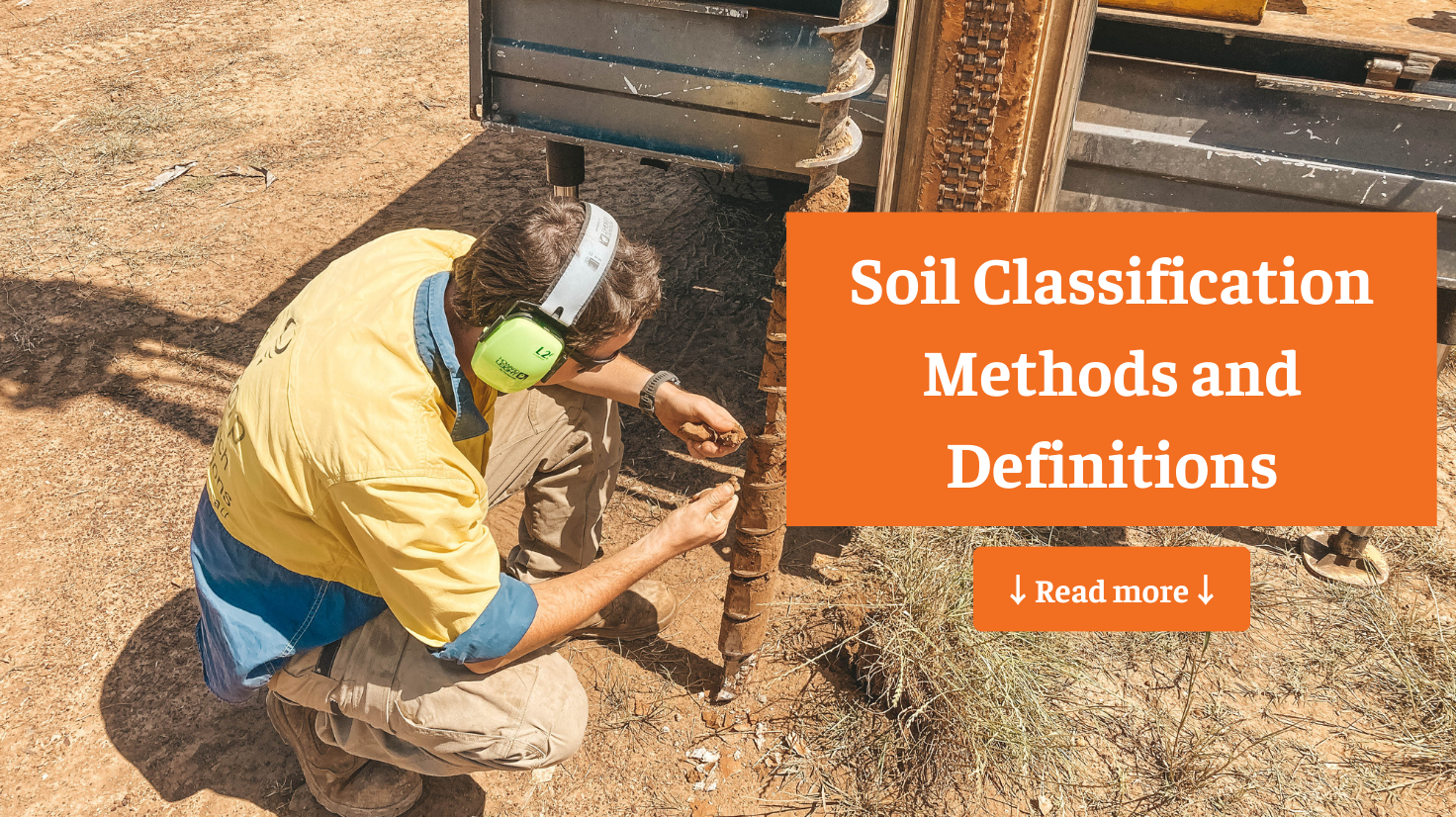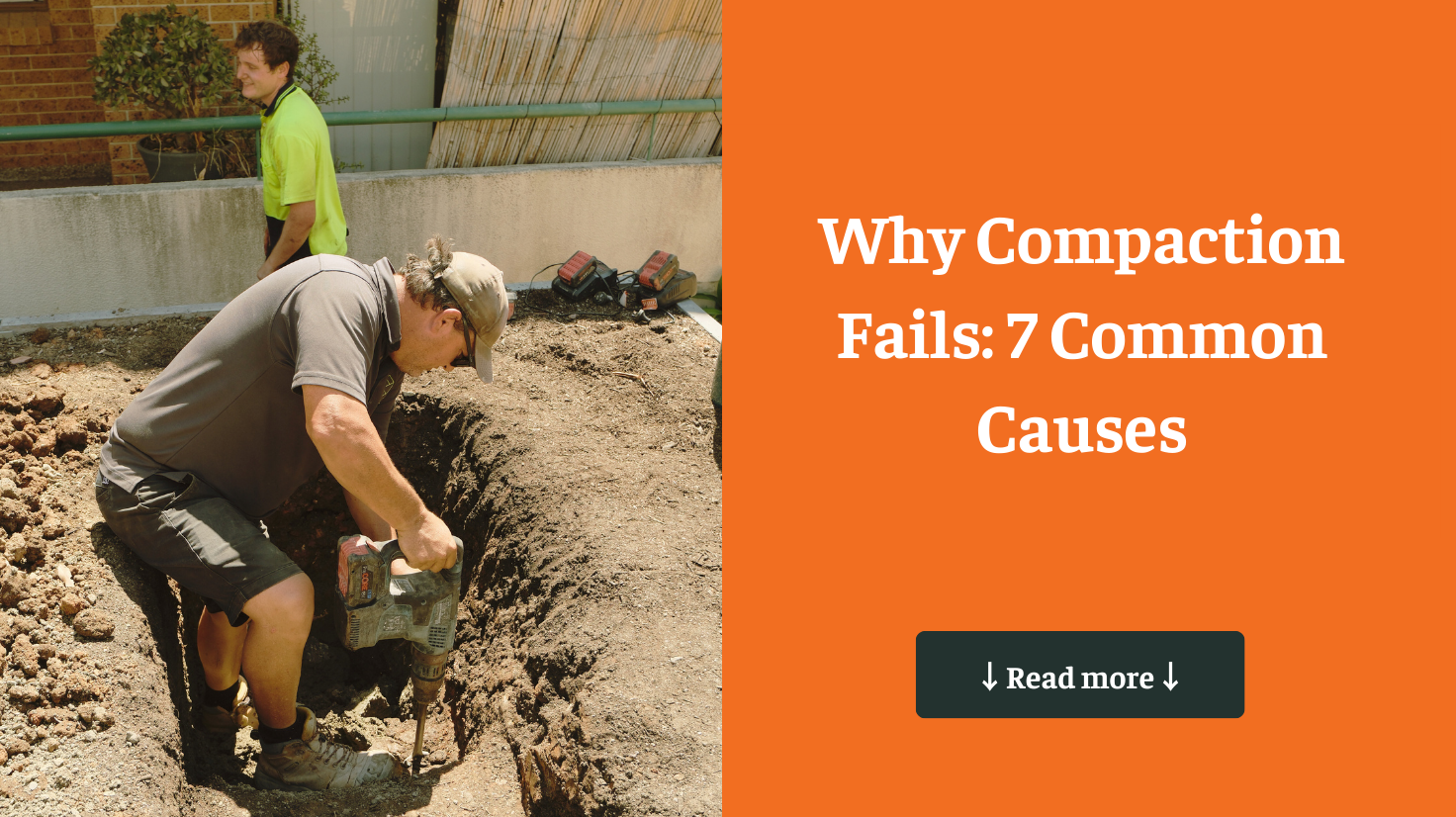Understanding different methods of soil classification is crucial for the success of any construction project. Soil classification provides critical insights into the properties and behaviour of soil, enabling engineers to design safe, stable, and compliant foundations and structures. Proper soil classification isn’t just a technical requirement; it plays a key role in mitigating risks, optimising costs, and ensuring the long-term durability of a construction project.
This guide explores various soil classification methods, their definitions, and their applications in geotechnical engineering.
1. What is Soil Classification?
Soil classification is a systematic process for identifying and categorising different types of soil based on their physical and chemical properties. This process is vital in geotechnical engineering because it helps predict how soil will behave under different conditions, such as loading, moisture changes, and compaction. By understanding these characteristics, engineers can design foundations and construction methods that minimise risks like settlement, erosion, or foundation failure, enhancing the safety and durability of structures.
2. Key Soil Classification Methods
Several globally recognised methods are used to classify soil, each with specific focus areas and applications. Below are the most commonly used systems in construction and geotechnical engineering:
a. Unified Soil Classification System (USCS) is one of the most widely used systems in engineering and construction. It categorises soil into three primary types: coarse-grained soils (sands and gravels), fine-grained soils (silts and clays), and organic soils. These categories are further subdivided based on grain size, plasticity, and organic content. The USCS is particularly useful in determining the suitability of soil for various construction purposes, such as foundation support and earthwork construction.
b. American Association of State Highway and Transportation Officials (AASHTO) Classification System is primarily used for classifying soils in road and highway construction. It divides soils into seven main groups (A-1 to A-7) based on grain size distribution, Atterberg limits (which measure plasticity), and the soil’s load-bearing capabilities. Each group is further subdivided to provide more detailed information about soil characteristics. This classification helps engineers assess the suitability of soil for use as subgrade material in road construction and pavement design.
c. Canadian System of Soil Classification is sed mainly in Canada, this system focuses on the physical and chemical properties of soil, as well as genetic factors related to soil formation. It is particularly useful in agricultural and environmental studies, providing a detailed understanding of soil properties that influence its behaviour and use. The classification includes factors like soil texture, structure, and mineral content, making it valuable for projects that require a deep understanding of soil behaviour over time.
d. Food and Agriculture Organization (FAO) Soil Classification System is used globally for soil surveys, agricultural planning, and environmental management. It emphasises soil properties that affect its use and management, such as texture, structure, and organic matter content. The FAO system is particularly important for projects related to agriculture, forestry, and land use planning, where understanding soil fertility and sustainability is crucial.

3. Definitions and Applications in Geotechnical Engineering
Soil classification involves several key concepts that are critical to geotechnical engineering. These concepts help engineers understand how soil will behave under various conditions and how it can be modified or managed to support construction activities.
a. Soil Plasticity: Soil plasticity refers to the ability of soil to undergo deformation without cracking or breaking. This property is measured using Atterberg limits, which include the liquid limit, plastic limit, and shrinkage limit of the soil. Understanding soil plasticity is essential in determining how soil will behave under different moisture conditions, particularly in areas prone to wet and dry cycles. Engineers use this information to design foundations and earthworks that can accommodate soil movement without compromising structural integrity.
b. Soil Bearing Capacity: Soil bearing capacity is the maximum load per unit area that the ground can support without experiencing shear failure or excessive settlement. This is a critical factor in designing foundations, as it determines the type and depth of foundation required to support the structure. Engineers use soil bearing capacity data to ensure that the foundation is strong enough to support the building’s load, reducing the risk of settlement, tilting, or collapse.
c. Soil Compaction: Soil compaction involves the densification of soil by reducing air gaps between soil particles, which increases its load-bearing capacity and stability. Proper compaction is crucial in preparing construction sites, particularly for roads, pavements, and building foundations. Engineers must carefully control the compaction process to ensure that the soil reaches its optimum moisture content (OMC) and maximum dry density (MDD), which are necessary for achieving the desired strength and stability.
d. Site/Soil Classification: Site classification involves assessing the overall characteristics of a construction site, including its soil classification, topography, and environmental conditions. Soil classification is a critical part of this process, as it provides detailed information about soil properties that influence foundation design, drainage, and earthwork construction. By accurately classifying the soil, engineers can develop construction plans that address site-specific challenges, such as slope stability, erosion control, and drainage management.
4. Ideal Geotech: Your Trusted Partner for Site and Soil Classification
Ideal Geotech specialises in providing comprehensive site and lot classification reports within 5-7 days in metro areas. Our experienced team and extensive fleet of geotechnical rigs cover NSW and Southeast Queensland, making us a trusted partner for both major home builders and individual homeowners. We offer detailed assessments that include soil classification, bearing capacity analysis, and compaction testing, ensuring your project is built on a solid foundation.
For more information or to request a site/lot classification report, visit our website or contact our team today. Ensure your construction project is built on solid ground with a thorough geotechnical report from Ideal Geotech.







